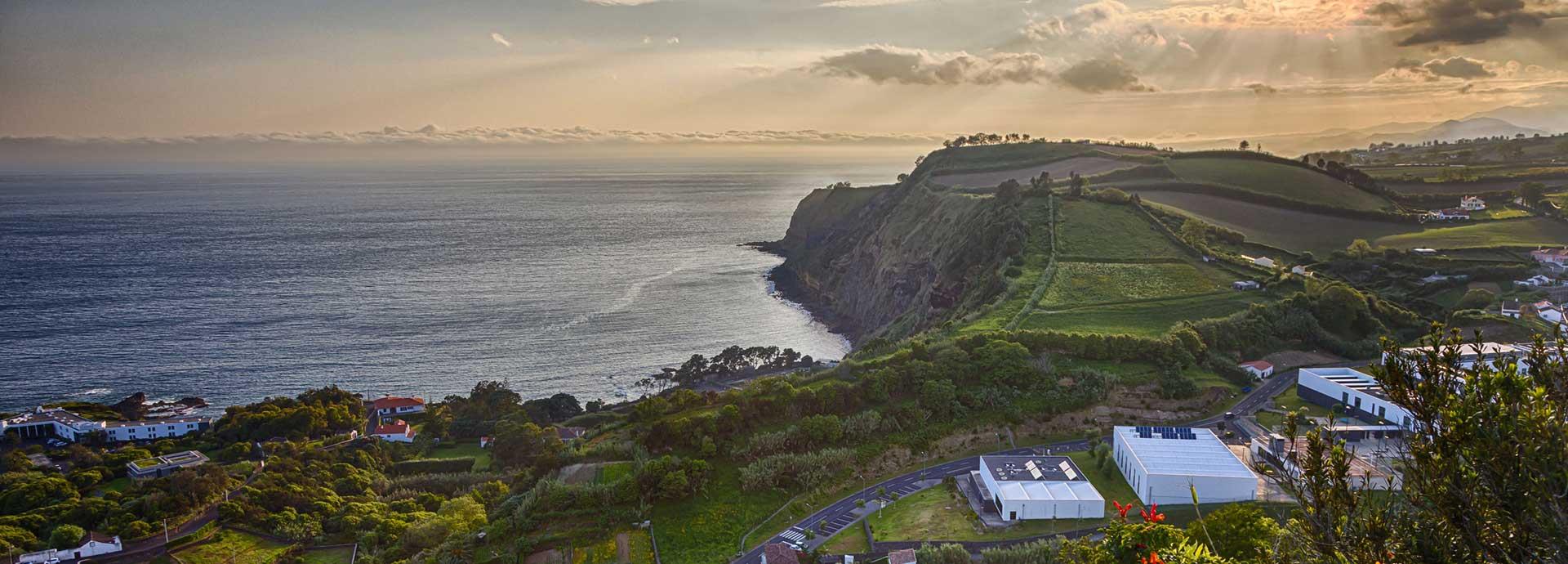

Wärtsilä's machine-learning software and advances in energy storage are changing the landscape of solar and wind power. Together, they form the building blocks of a 100% renewable future.
When it comes to getting smart about renewable energy, with high fuel costs but abundant wind and solar, exotic locales like the Azores archipelago and the Caribbean make excellent testing grounds. For the islands of Graciosa and Bonaire, machine learning is hard at work, harnessing wind and solar energy output and optimising the grid.
In conjunction with the new generation of energy storage systems such as E.On’s Texas Waves, these projects represent the intertwined sides of the smart energy equation: optimisation and storage.
With AI just around the corner, they’re leading us towards a smart energy future based on cheap, reliable and 100% renewable energy.
Sun, sea, software
When a smart energy project was first conceived for Graciosa in 2006, the island had been relying on a diesel-generated power plant for decades. The aim was to achieve 65% renewable energy for the entire population with 100% renewable power capability depending on real-time renewable availability. According to Wärtsilä Lead Research Engineer Luke Witmer, things are on track.
While the most visible step might be the construction of functional wind farms and solar collection, behind the scenes, it is energy management software that’s making renewable energy security a present reality.
“Wind and solar are potentially excellent renewable energy sources, but they’re also volatile and unpredictable,” explains Witmer. “You have to have ways of keeping the electrical grid sound if you’re to let those energies into it.”
Endlessly switching between collecting, storing and doling out power as the needs of the grid fluctuate, the energy input rises and falls, and as battery capacity drains or maxes out is a delicate dance. It relies on hard logic, forecasting and statistics. With the right human guidance, machines excel at it.
Does AI play a part?
Witmer explains that while there’s been some hype about the potential role of Artificial Intelligence in managing the volatility of wind and solar, we are not quite there yet.
“Computers are trained by humans, with large swathes of data that’s been cleaned, processed and filtered. Humans are still heavily involved in making sure we feed good info to the computers,” he says.
While in the future AI will have an important role to play in operational planning, true “self-learning” isn’t yet a feature of energy generation, says Witmer.
However, in the case of Graciosa, which has a battery big enough to power the whole island for under an hour, machine learning makes reliable wind and solar energy possible for the whole island. On Dutch-owned Bonaire, which has a notably larger population, it’s a matter of scaling up the optimisation and statistical forecasting.
Meanwhile, E.On’s Texas Waves facility is working on the storage side of the equation. These energy storage systems not only store an increasing amount of energy from wind and solar, but they also monitor the electrical quality of grid conditions, very quickly responding and balancing supply and demand shortages with bursts of power in both directions.
As complex systems are augmented with AI, it has become clear that machines are now able to carry a level of intelligence and capability to autonomously operate in ways that humans alone could not do. That said, it is more about the augmentation of the human operator condition than the replacement of the operator.
Disrupting the industry
Machines aren’t the only ones getting an education though. Risto Paldanius, Director of Business Development at Wärtsilä Energy Business highlights the disruption wind and solar power represent for a slow-moving industry.
“Non-renewable energy has been stable and dependable. It has existed for good reason,” says Paldanius. “But we have to admit that in the new world of renewables it almost feels like a dinosaur.”
The industry needs to get used to the idea of being more agile, he says. A nuclear power or gas plant used to stay viable for up to 50 or 60 years, yet now we’re talking about plants that can be built in six months, operated for a decade and then be replaced with newer technology.
It’s a game-changer for investors, but this smart investment will have huge pay offs for those who get it right – not to mention for the planet.
No looking back
Towards the end of the commissioning and the beginning of the endurance testing, Witmer’s team realised that they were a button click away from delivering 100% renewable energy to Graciosa’s entire population for the first time.
“We thought: Ok, no looking back,” recalls Witmer. They clicked the button.
For the first time in decades the diesel power plant fell silent. The wind blew… and the lights stayed on. It was one of the highlights of a job that regularly takes Witmer through the full gamut of emotions.
“I love what I do. It has spiritual meaning – for humanity as well as the rest of the planet and everything in it. The technology is here. If there’s one thing we should be able to figure out, it is this.”



